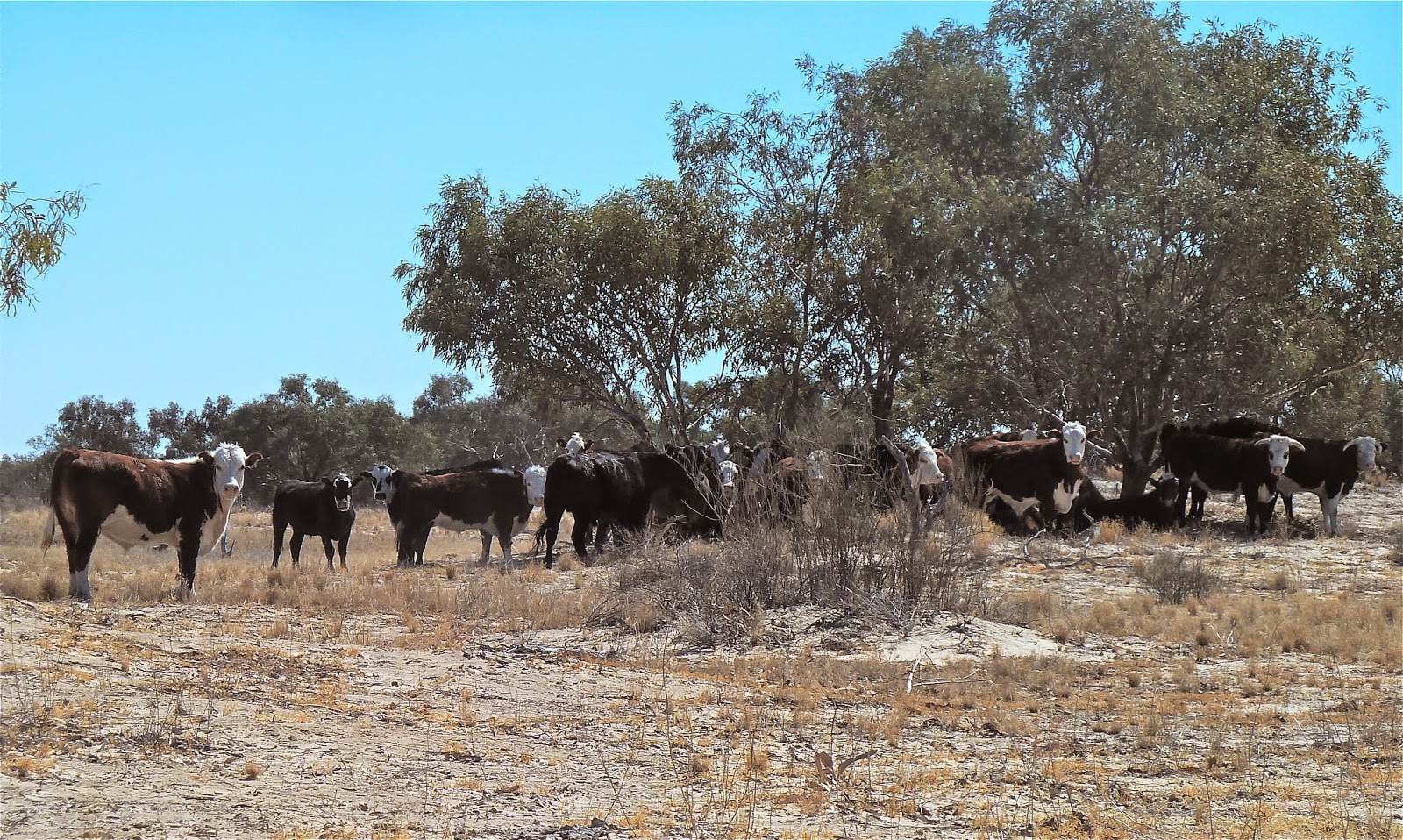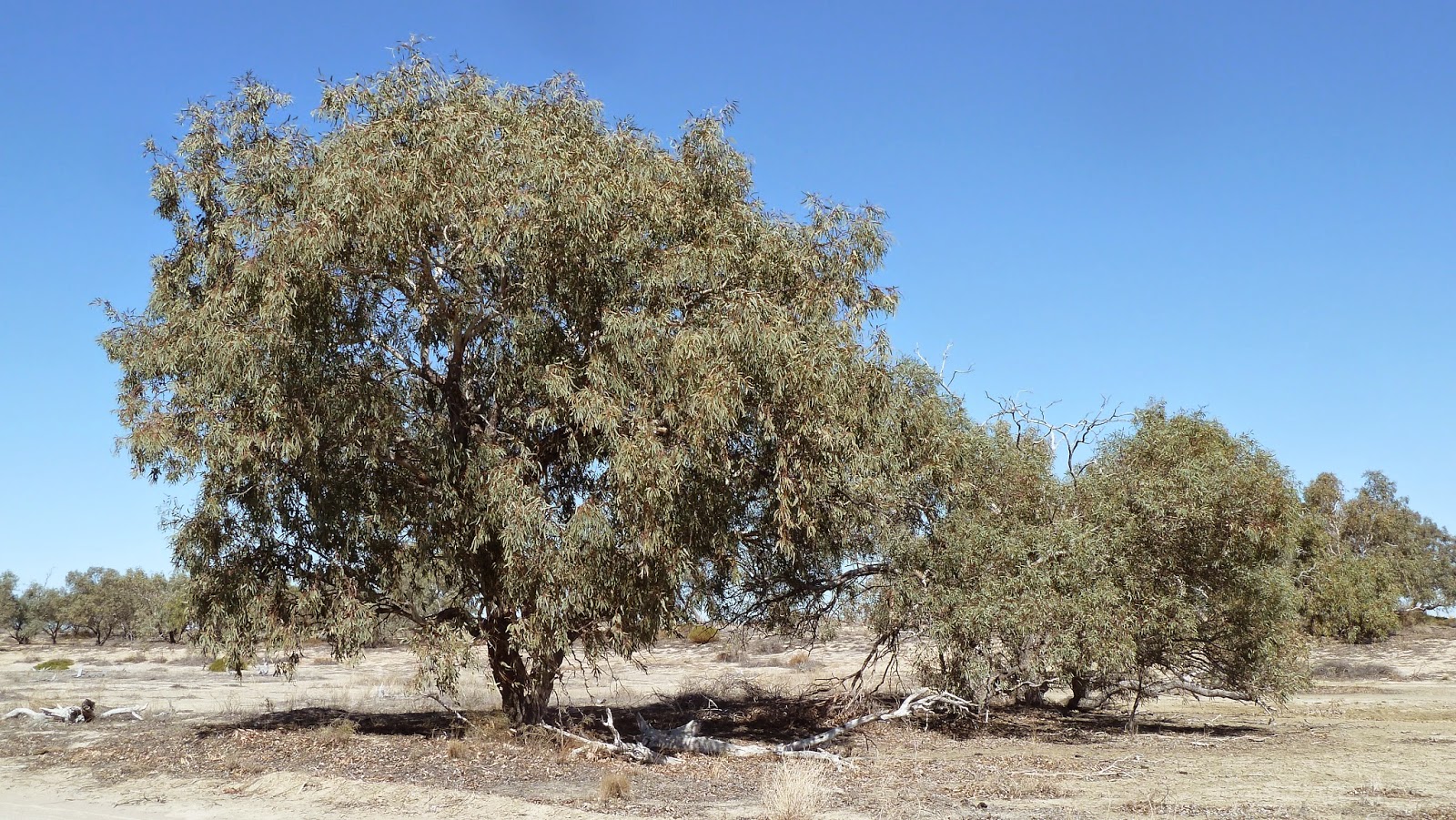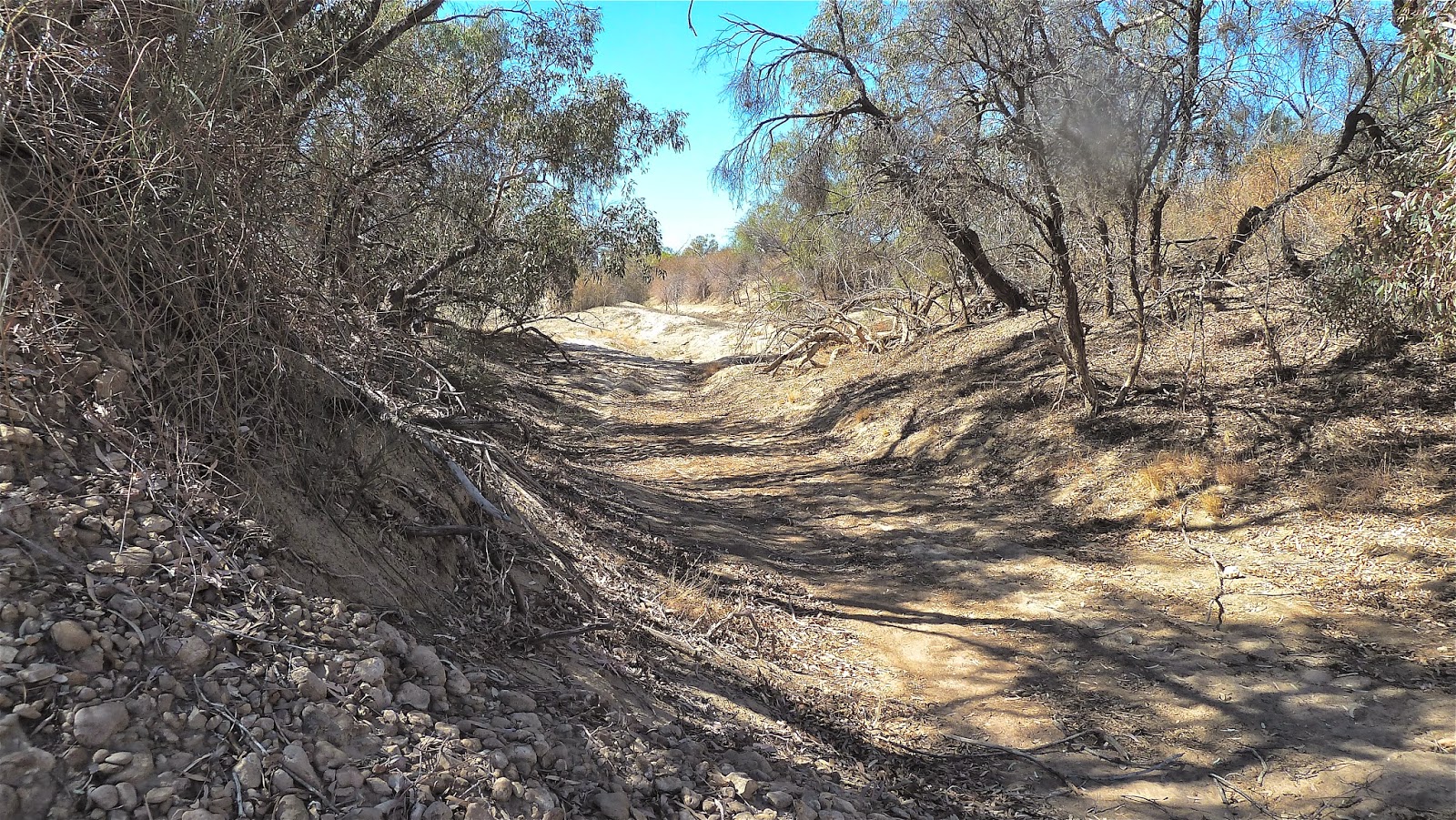We wanted to visit Cullyamurra Waterhole, and the Dig Tree, both of which involved detours off the Adventure Way, while constantly monitoring diesel consumption…
It was a beautiful morning and Innamincka soon felt far behind. We were by the waterhole – turn off 7 km east of the I-word – for sun-up. Everything had a pink tinge. The only sounds were blathering Little Corellas and, at last, the kettle boiling for my life-restoring first cup of tea.
Explore Australia describe Cullyamurra as one of Australia's grandest waterholes. It has splendid Red Gums and loads of birds and fish, such as Lake Eyre Callop (Golden Perch), Catfish, Grunters and Yabbies. And it's part of my old favourite, of course – Cooper Creek. You can camp here and, unbelievably, launch a powerboat. Speed is restricted to under 10 knots, but that's probably loud enough to spoil the remarkable peace. The sun rose, and so did the Corellas, noisy as ever, even though there were pelicans still resting if no longer sleeping.
There be dingoes. And a smart toilet for such a remote place.
We couldn't linger: the border and bitumen beckoned. We took our leave of Innamincka Regional Reserve, passing several trucks transporting oil and gas equipment.The Reserve is massive, covering 13,545 square kilometres and encompassing dunes, gibber plains, river channels, flood plains, salt lakes and wetlands. The Cooper Creek system is listed as a Ramsar Wetland of International Importance*. It was used as a trade route and meeting place by Aborigine groups for thousands of years before being visited by European explorers in the 1840s. We had only passed through the Reserve, having moved on from Innamincka ahead of schedule and abandoned a plan to visit Coongie Lakes National Parks. The Lakes – which have wonderful names such as Toontoowaranie and Marrocutchanie – are also a Ramsar site, and attract more than 200 species of bird including many migrant waders. You win some, you lose some.
Back in Queensland, I hoped the list of natural resources on the sign above wasn't in order of priority: some hope. As we were now embarking on a slow meander back east, I needed to make the most of vast empty vistas.
The famous Dig Tree and Burke and Wills' Camp 65 was 13 kilometres back in the wrong direction, from just beyond the Burke and Wills Bridge over Cooper Creek, 27 km from the border. The Creek looked lush and verdant, in total contrast to the rest of the landscape.
In August 1860, 19 men, 26 camels, 23 horses and 6 wagons left Melbourne to cross the Australian continent from south to north. Progress across Victoria had been slow, and Robert Burke went ahead of a supply party at Menindee (on the Darling River in New South Wales), who were to follow on when conditions allowed. He took seven men, 16 camels and 19 horses with him on to Cooper Creek, where he established a depot at Camp 65. Burke was keen to press on further, despite it being the height of summer, and in December he and three others (John Wills, John King and Charley Gray) continued north for the Gulf of Carpenteria, leaving William Brahe in charge of the depot. Burke instructed Brahe to wait three months for his return before heading back south.
The four were within tidal reach of the Gulf before being forced back by impenetrable mangroves. Conditions had deteriorated at Camp 65: there was illness and tensions with Aborigine neighbours. It was four months and one week after Burke's departure that Brahe made the decision to return to Menindee. He buried some provisions and a note and blazed an instruction to dig on a nearby tree. The evening of the day he left, some nine hours later, Burke, Wills and King (Gray had died on the way back from the Gulf) reached the camp. There followed a tragic chronology of events. Burke found Brahe's note and buried a new one, but he didn't change the blaze on the tree. The three continued to follow the Cooper downstream, heading for the aptly name Mount Hopeless.
Brahe returned to the camp after a couple of weeks to see if Burke had returned, but could see no evidence of others having been there and didn't linger. Burke in the meantime was unable to cross the Strzelecki Desert after his camels died, and with provisions dwindling, the three men returned to Cooper Creek. They were largely surviving on nardoo, an aquatic fern they had seen Aborigines consuming. They were unaware of necessary preparation methods, however, and there is debate about the extent to which this diet hastened their deaths. They suffered from vitamin deficiency and malnutrition. Burke and Wills died by the Creek at the end of June 1861: King was looked after by Aborigines and survived. He was found by a relief expedition three months later.
There is masses of information at the Dig Tree. If you journey there in homage to an extraordinary yet doomed effort in an inhospitable land, allow time to stand and stare on the banks of the Cooper and imagine what it must have felt like to return to the deserted camp. Burke could hardly have expected Brahe still to be there, but he must have hoped against hope.There is a lot of confusion about the several tree markings, when exactly they were blazed, and who made them. Make sure you pick up the leaflet from the 'stockade' with an annotated photo of the blazes. This will save you time wandering from tree to tree trying to spot markings that are no longer visible. Some have inevitably been obliterated as these mature Coolabahs have grown. The trees are believed to be more than 200 years old.
The leaflet also includes the first known photograph** of the Dig Tree, taken in 1898 by John Dick, a stockman and amateur wood carver. It includes the remains of a timber stockade built by Brahe to protect the camp's equipment and provisions, and later destroyed by flood waters. The banks of Cooper Creek have been eroded back since then. Dick made a couple of carvings on nearby trees, one of them an image of Burke's face, and these have added to confusion about who blazed what. If you want to know all the ins and outs of 'the mystery of the Dig Tree blazes', you'll have to go there.
We hastily returned to the main road: we had to put miles on the clock.
The Adventure Way is long. But slightly shorter than our paper map led me to believe. In the vicinity of Kookoona Creek, the road cut off a lengthy curve. On our GPS map on the iPad, the navigation marker headed off into completely empty space on the map. Since there are numerous gas fields not that far away, we had to conclude the mining company must have built a new road. Just when we were settled back on bitumen, however, there was an unsealed section and a familiar hazard.
There were some engaging wildlife moments along the way.
Mama Emu couldn't scurry away from us quite so quickly with five babies at her feet. Just as cute was the echidna who thought that if he couldn't see us we couldn't see him.
Almost in the centre of the image below is a Black-fronted Dotterel, beside Cooper Creek. You may need to click to enlarge.
We had a late breakfast by one of the many Cooper channels about 100 kilometres west of Nockatunga (below); and we had lunch on the banks of the Bulloo at Thargo (below but one, two and three), having filled up with diesel and a certain amount of relief.
We were now far enough east to appreciate why there had been so many road closures following the downpour a few days previously in this part of the world, while we'd been dry as a desert in Birdsville.
We arrived in Cunnamulla before 5. Not the 15 hours from Innamincka, then? We were staying in the Club Boutique Hotel, always intended as a bit of a treat, but never more so than after our wretched Trading Post experience. We had stopped here for coffee last year on our way from Charleville to Kilcowera. Then the place was being renovated and not really open but we were still welcomed. Work is ongoing, especially in the garden, but we had a sizeable, pleasantly furnished room with a big comfy bed and great lighting, and a large bathroom with walk-in shower. We didn't go far to eat that night, about ten metres into the bar/restaurant. With good food and wine to finish the day, it was hard to imagine a bigger contrast from 24 hours previously. And there was a relaxing 'extra' day to look forward to.
** this image belongs to the Conrick Collection at the State Library of South Australia



























































































